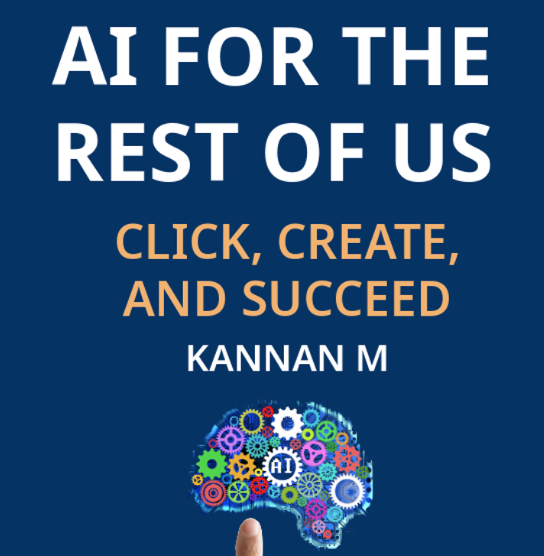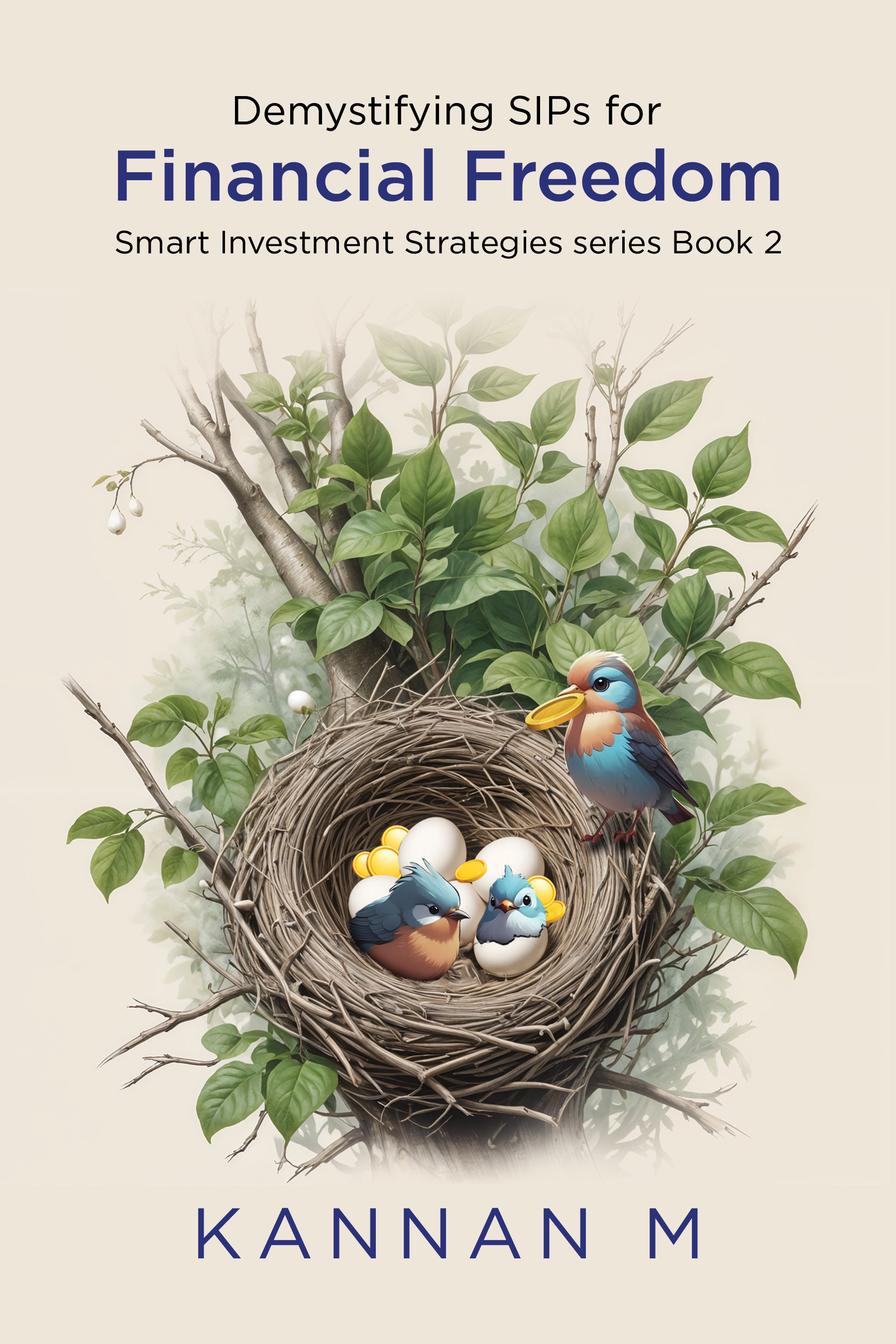Don't just watch the AI evolution through the window. Wet your hands. Master the tools that turn 50 slides into 12, and move from manual work to strategic storytelling. Read our AI book
📘 AI for the Rest of Us
Practical • Timely • Human-first
When Three Technocrats Knocked on My Door After My AI Session
What Senior Innovators Discovered About the New AI Workflow
By Kannan M | radhaconsultancy.blogspot.com
Presentation Reinvented
When AI Stopped Being a Buzzword and Started Delivering Results
Google's Gemini 3 just dropped. OpenAI's "Pro" models are evolving weekly. Even the lightweight "Nano" models are now powerful enough to run on your phone. The AI race isn't just heating up—it's on fire.
But here's what nobody's talking about: How do working professionals—engineers, consultants, trainers—actually USE these tools to save hours of drudgery and deliver better work?
I didn't have to theorize about this. The answer walked through my door. Literally.
The Day Three Senior Technocrats Knocked on My Door
After my "AI for Engineers" session at Annamalai University (which received a 4.6/5 ⭐⭐⭐⭐⭐ rating from 50+ participants), I assumed the workshop was over. Pack up. Move on. Next project.
I was wrong.
Three days later, three senior technocrats—each with 20+ years of industry experience—showed up at my home. No tea. No small talk. They came with one urgent question that's haunting every technical professional right now:
"How do we create professional, impactful presentations without spending days on design?"
This wasn't about learning AI theory. This was about survival in a world where Gemini 3, ChatGPT Pro, and Canva's AI connectors have just changed the rules of the game.
What happened next proved why my Annamalai session scored 4.6/5—and why you need to pay attention to this workflow revolution.
Presentation Reinvented: From Stitched JPEGs to Editable Layers
For a long time, my answer to this question was hesitant. In the "old days" (which was just a year ago), using AI for presentations was messy. You had to generate text in a chatbot, create visuals in a separate image generator, and then manually stitch them together in PowerPoint. Even worse, the AI images were "flattened"—meaning if the text on the slide was wrong, you couldn't edit it. It was a rigid, unchangeable JPEG.
That era is over. The combination of Gemini with Canvas Mode and the new OpenAI + Canva Connectors has changed the workflow entirely.
Here is how we proved it in real-time with two live case studies.
Case Study 1: The "50 to 12" Transformation
Mr. Amarnath, a senior innovator, approached me with a massive challenge. He had a deep technical presentation on Improvement of Water Management to be submitted to government officials.
The Input: A dense, heavy deck of 50+ slides.
The Problem: It was too long for a policy meeting.
The Fix: We used Google Gemini with Canvas mode.
We uploaded the original deck and gave a specific prompt to condense the narrative while keeping essential diagrams. Within one hour, the AI reorganized the structure and visuals. The Result: A crisp, high-impact 10-12 slide deck in Google Workspace. The Breakthrough: The output wasn't a static image. Every text box and chart was an editable layer. We could tweak the wording and adjust the flow instantly. The senior innovator was visibly impressed by the efficiency.
Case Study 2: Storytelling for Petrochemicals
Next, Mr. Anand Baiga visited with a presentation for the Petrochemical Process Industry. Engineering decks are often accurate but dry. We used the new connectors to rewrite the story flow, highlighting cause-and-effect relationships in the process. The Result: We didn't just get "slides"; we got a visual narrative. The AI intelligently resized visuals to fit the slide layout—something that previously required a paid graphic designer. The final output was polished in Canva, ready for training.
Why My Annamalai Session Worked
Many asked why my recent session received a 4.6+ rating. It wasn't just the content; it was the delivery. I utilized these same ChatGPT + Canva Connector workflows to build my own deck. This allowed for a gentle, logical flow and crisp visuals that kept the students and faculty engaged. The credit goes to the new AI toolchain that acts as a real-time design partner.
The Guide: How You Can Do This Today
If you want to stop wrestling with PowerPoint and start telling stories, here is the exact workflow we used:

Step 1: Upload Your Source Material
Stop Typing Manually
Upload your source material (Word, PDF, PPT, or raw text) directly into Gemini or ChatGPT. No need to retype content—let AI handle the heavy lifting.
Step 2: Activate the Right Connections
Enable Canvas Mode for Presentation Output
In Gemini, activate Canvas Mode
In ChatGPT, ensure you have the Canva Connector enabled
Why? This ensures the output is a presentation format, not just a block of text
Step 3: Craft Your Specific Prompt
Be Clear About What You Want
Don't just say "make a presentation." Tell the AI exactly what you need.
Example Prompt:
"Create a 12-slide executive deck for a 90-minute technical session based on this file. Keep key visuals, remove clutter, and focus on [Key Theme]."
Pro Tip: The more specific your prompt, the better your output. Include slide count, audience type, tone, and key focus areas.
Step 4: Edit in Real-Time (The Game-Changer)
Fine-Tune with Editable Layers
This is where the new technology shines. Because the output has editable layers, you can:
✓ Fine-tune the wording instantly
✓ Swap images and charts
✓ Adjust colors, fonts, and layout
✓ No longer stuck with what the AI gives you
Bonus: If using Canva, you can present directly from the browser and track analytics (who viewed your link)—something impossible with standard offline PPTs.
The Complete Workflow in Summary:
Upload → Connect → Prompt → Edit
That's it. Four steps to transform 50 slides into 12 professional, story-driven slides—ready in under an hour.
The Verdict
The "Nano" and "Pro" moments of tech are disrupting the graphic design and engineering workflow once and for all.
The question is simple: Are you going to watch this development through your window, or are you going to wet your hands?
Ready to Transform Your Workflow?
If you want to upgrade your presentations, training materials, or engineering proposals, the tools are ready. The question is: Are you ready to move from spectator to practitioner?
Here's how we can work together:
Three Ways to Get Started:
1. Book a 1-on-1 AI Workflow Consultation
Let's discuss your specific presentation challenges and map out your AI transformation roadmap. Perfect for corporate teams, trainers, and engineering professionals.
📞 Call/WhatsApp: 9789692495
✉️ Email: radhaconsultancy2014@gmail.com
2. Join My Next AI Workflow Workshop
Learn the exact process I used to earn that 4.6/5 rating at Annamalai University. Hands-on training with real case studies. Upcoming sessions for engineering teams, finance professionals, and corporate trainers.
📅 Register your interest: radhaconsultancy2014@gmail.com
3. Download the AI Presentation Quick-Start Guide
Get my free step-by-step checklist for transforming your decks using Gemini + Canva. Includes prompt templates and workflow shortcuts.
📥 Download this article as a PDF — Perfect for offline reading or sharing with your team
📖 Read more on AI in our blog — Regular updates on practical AI applications
Connect with Kannan M
LinkedIn, Twitter, Instagram, and Facebook for more insights on AI, business, and the fascinating intersection of technology and human wisdom. Follow my blog for regular updates on practical AI applications and the occasional three-legged rabbit story.
For "Unbiased Quality Advice":
📞 Mobile: 9789692495 | ✉️ Email: radhaconsultancy2014@gmail.com
📺 YouTube: Subscribe to our channel
📝 Blog: https://radhaconsultancy.blogspot.com/
#AIPresentations #WorkflowAutomation #EngineeringAI #ProductivityHacks #GeminiCanvas





